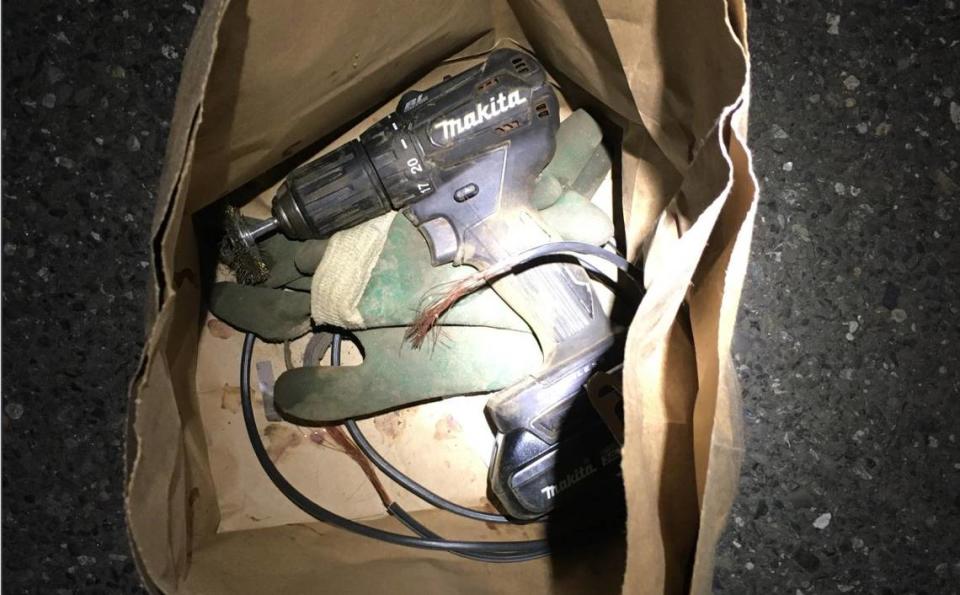Bellingham woman sentenced to federal prison for placing train shunt in November 2020
A Bellingham woman will spend a year in federal prison for her role in placing a shunt along the railroad tracks near Bellingham to disrupt BNSF Railway trains safety features in late November 2020.
Ellen Brennan Reiche was sentenced Friday, Dec. 17, in U.S. District Court for the Western District of Washington in Seattle to one year and one day in federal prison, with three years of supervised release, according to a U.S. Department of Justice press release.
As part of her sentence, Reiche also has to complete 100 hours of community service while on federal supervision, the release states.
After a two-day trial, a jury convicted Reiche of violence against a railroad carrier in early September, according to previous reporting in The Bellingham Herald.
At Reiche’s Friday sentencing hearing, Chief U.S. District Judge Ricardo S. Martinez called Reiche’s offense “extremely serious,” the Department of Justice release states.
“Placing a shunt on active railroad tracks puts lives in danger — to drivers preparing to cross the tracks who may not get any warning lights of an approaching train, and to the homeowners in the area who could be endangered by a train derailment,” U.S. Attorney Nick Brown said in the release. “In this case the shunt was placed just prior to the arrival of a train with 97 tanker cars loaded with crude oil. Thankfully, the device was discovered and removed before it could cause a tragedy.”
Reiche was one of two people arrested on Nov. 28, 2020, for placing a shunt north of Bellingham near the railroad intersection with Cliffside Drive. Samantha Frances Brooks, of Bellingham, also was arrested and indicted for one count of terrorist attacks and other violence against a railroad carrier, according to federal court records.
Brooks pleaded guilty to interference with a railroad signaling system July 9, and a federal judge accepted her guilty plea July 26. Brooks was sentenced Oct. 8 to six months in federal prison and three years of supervised release, court records state. Brooks also is required to complete four months of home confinement and 200 hours of community service while on supervision.
Shunts consist of a wire stretched between and connected to the rails of the track to mimic the electrical signal of a train on the track, according to previous reporting in The Herald. Sensing trains, safety systems prevent trains from entering the area until the shunt has been located and removed.
The placement of shunts also can cause safety hazards by interfering with the operation of crossing gates at intersections with roadways and can cause gates to allow vehicle traffic to cross tracks, even with a train approaching, court records state. Shunts also can cause the automatic braking system on trains — known as Positive Train Control — to engage, which can cause decoupling of cars or derailment, federal records show.

The arrests
In late November, BNSF police received a motion alert from a game camera placed along track just north of Bellingham, and saw a person trespassing along the tracks north of the railroad intersection with Cliffside Drive. BNSF police contacted the Whatcom County Sheriff’s Office to investigate.
Deputies found Brooks and Reiche in the area. The pair attempted to run, but stopped when deputies ordered them to and they were detained for trespassing on railroad property, according to federal court records.
Deputies later located a wire shunt between the tracks in the area where Brooks and Reiche were seen. A bag that Reiche was carrying also was found, which contained rubber gloves, a piece of black insulated copper wire and a Makita drill with a wheel-shaped brush attachment, according to court records.
The wire found in the bag was similar to the wire used in shunting incidents, according to a previous Department of Justice press release.
A train carrying crude oil and other cargo was scheduled to come through the area where Reiche and Brooks placed the shunt soon after the incident.
Other shunting incidents
Since Jan. 19 of 2020, there have been at least 41 similar attacks along BNSF track in Whatcom and Skagit counties where shunts have been placed, according to previous reporting in The Herald and several Department of Justice releases. The FBI’s Joint Terrorism Task Force has been investigating the incidents since the first attack in January 2020.
On 10 occasions, shunts were placed in areas that disrupt crossing guards where tracks cross streets, the release states. And on Oct. 11, 2020, multiple shunts were placed in three different locations in Whatcom and Skagit counties. The shunts triggered an automatic braking system on a train, which was carrying hazardous and combustible material, and caused a portion of the train to decouple from the engine, the Department of Justice releases state.
Investigators believe some of the attacks on the safety equipment were to protest the construction of a natural gas pipeline across British Columbia through Indigenous land and to keep supplies from reaching Canada.
Reiche’s conviction on Sept. 9 came on the same day that the Federal Railroad Administration released its report on the possible causes of an oil train that derailed and exploded into flames in Custer in December 2020. The federal agency’s report said the train showed evidence of possible vandalism after it “experienced a broken train collision.”
While the Federal Railroad Administration said it can’t be certain of the accident’s cause, the agency ruled out drug or alcohol use among the crew, damage to the tracks, crew fatigue and weather-related factors because of freezing temperatures and light snow on the ground.

